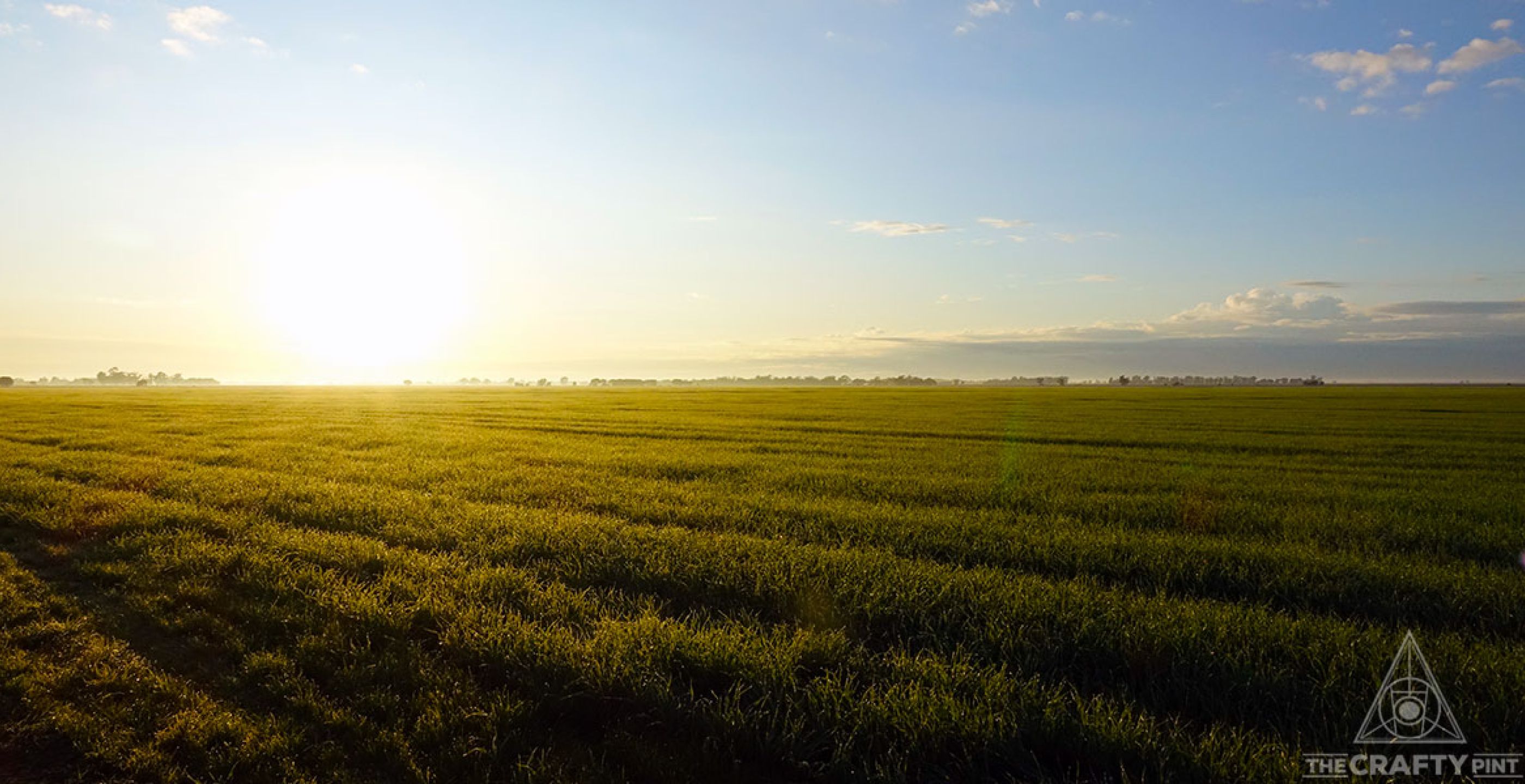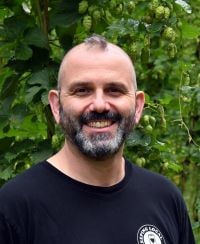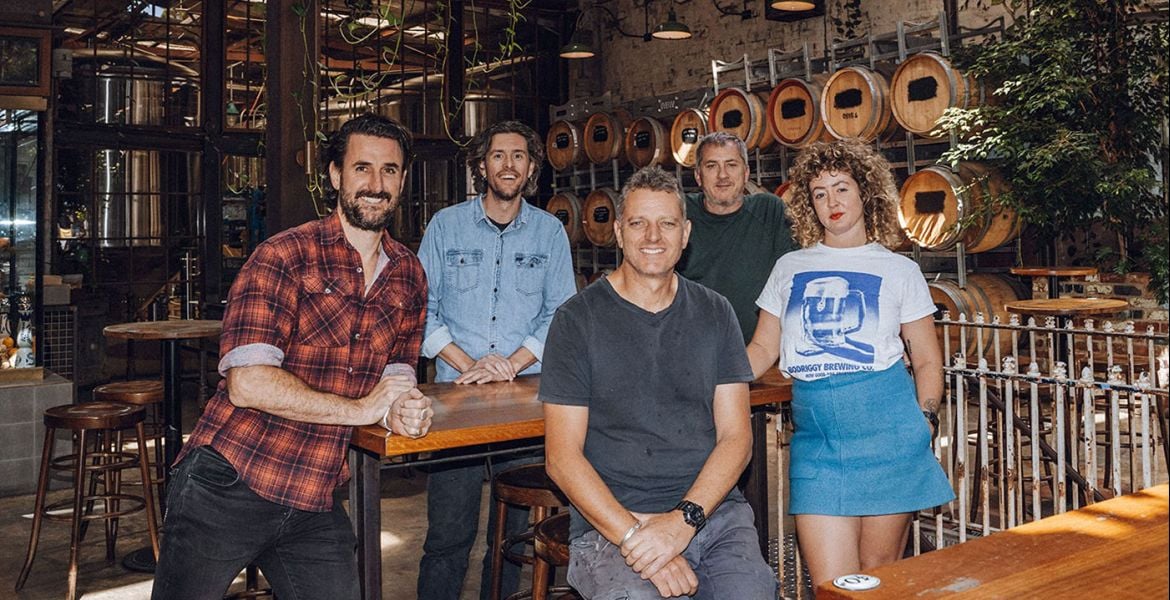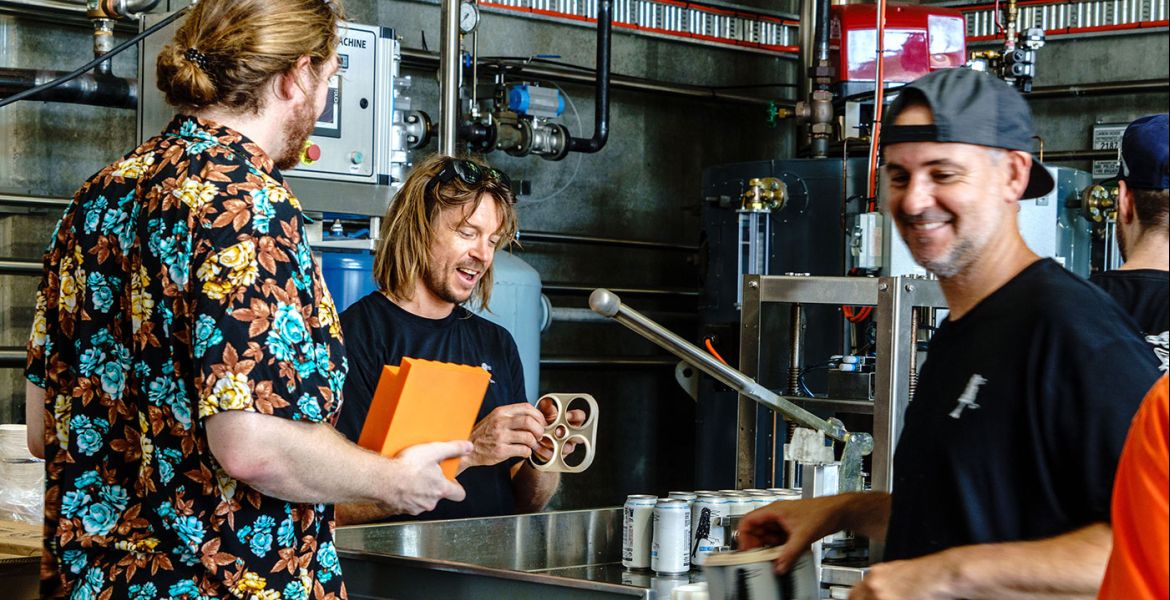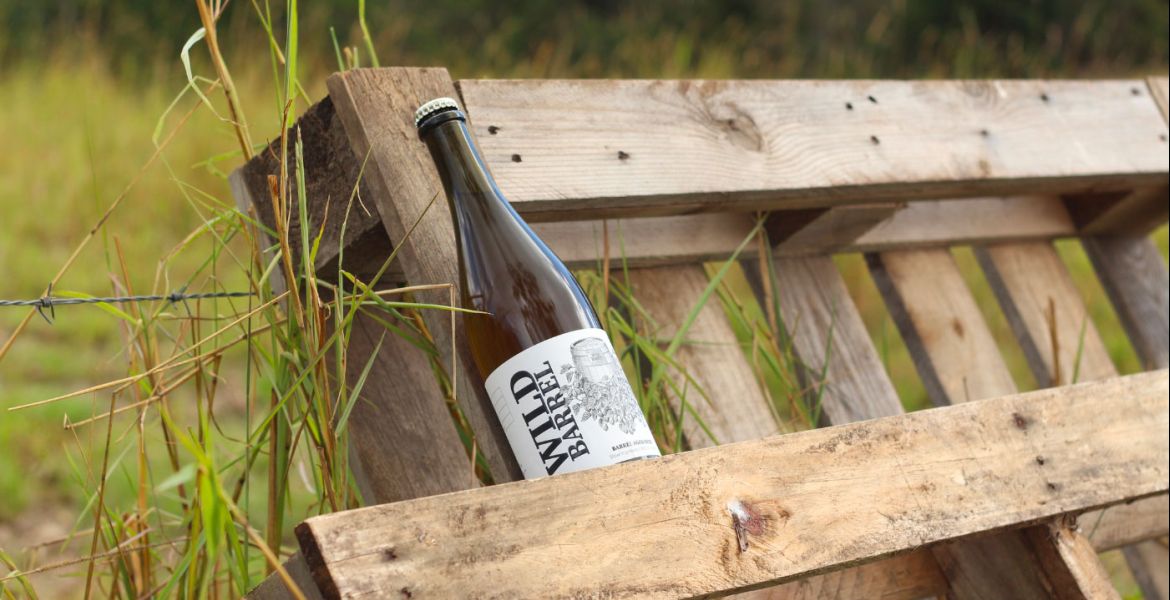Back in 2015, we ran a story on a small project in the Riverina called Barellan Beer. The article said those involved were looking at setting up a small malting facility. Here's their story seven years on...
For his 12th birthday, Stuart Whytcross was given a pretty sizeable gift by his parents: 50 acres of land in the Riverina region of New South Wales. In the first year growing wheat on his land, he made $6,000 profit. Not bad for a school kid just entering their teens.
Today, 27 years later, he still farms that land – part of the Whytcross family’s 7,500 acres north of Barellan – but today it’s growing something rather less common: Tibetan purple barley.
At the same time, alongside lifelong mate and business partner Brad Woolner, he’s been overseeing the construction of Voyager Craft Malt’s $10m malting operation in nearby Whitton. The new setup has seen them go from producing 40 tonnes of malt in their first 12 months to a position in which they’re capable of 200 times that output. And it’s a case of quality as well as quantity: in February, their Veloria malt claimed gold at the Malt Cup in the States.
All in all, not bad for a pair who only malted their first grains in the middle of the last decade.
It’s fair to say much has happened over the quarter century since a 12-year-old born into a multigenerational farming family was gifted his first plot of land – and not just for Brad and Stu. The Riverina farming community in which they were raised has experienced some incredible hardships – with the current floods threatening another catastrophic harvest in 2022. On a national scale, the craft brewing and distilling industries now supplied by Voyager – and, in turn, the farmers with whom they work – have gone from zero to hero, challenging and changing Australia’s drinking culture as they’ve grown.
Increasingly, all three have been evolving in parallel, bringing others along for the ride – and the catalyst, the thread tying much of it together, is Voyager.
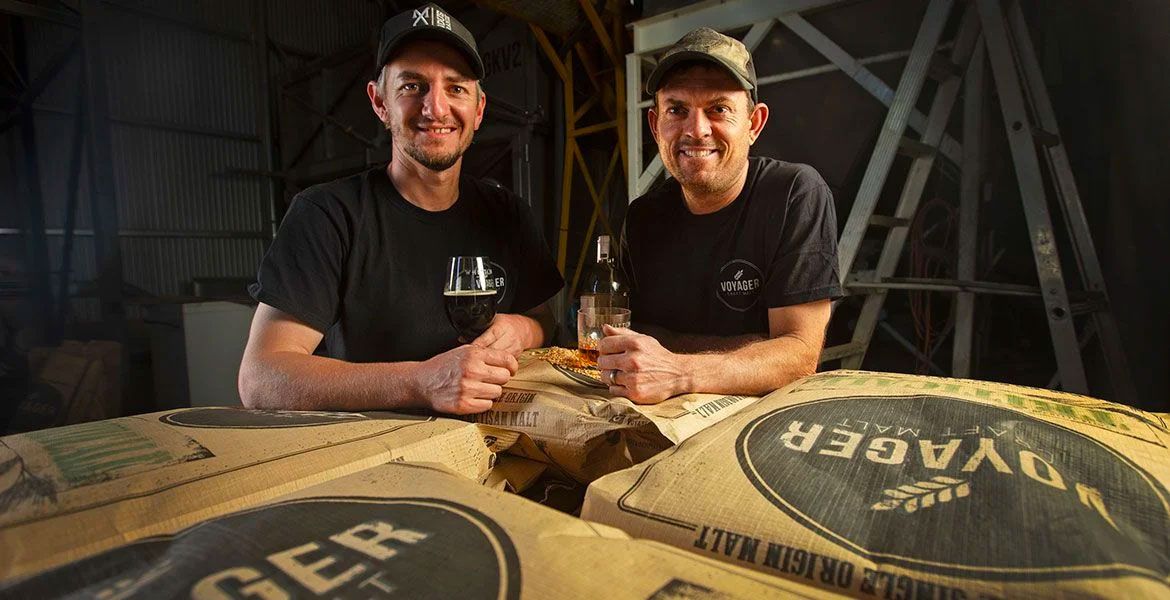
Brad and Stu have been working with farmers to provide a wider array of malts to the country’s craft brewers, distillers and bakers. In turn, brewers, distillers and bakers have been providing feedback so those malt products can be improved and further diversified.
Growing demand for grains with provenance, different (or better) characteristics, as well as certified organic and sustainable malts are making it more feasible for farmers to switch from industrialised farming methods to regenerative practices. And this, in turn, has the potential to help farmers obtain better outcomes in years when there’s less than ideal conditions as well as acting as a weapon in the fight against climate change.
Dig deeper into the Voyager story and the benefits of their approach keep cropping up. By malting grain on a farm in the region where the raw ingredients are grown, they're reducing food miles – no need to transport grain hundreds or thousands of kilometres to create the finished product. It doesn’t hurt that the maltings uses water from the surrounding farm’s irrigation system the sends it back to the farm, or that much of its heat and energy requirements are met by converting cotton trash and food waste such as walnut shells from their neighbours into char.
In striking up a partnership with the farmers that run Southern Cotton, they’ve also funded the construction of a multimillion dollar tourist destination under the same roof as the malting operation. And around the country, others are looking to their example and aiming to replicate what Voyager has achieved in their own grain-growing regions.
Add it all up and you’ve got quite the story.
Indeed, having spent a few days in the company of Stu and one of the farming families with which Voyager works closely, it’s tempting to start looking for holes in the story: surely there’s a fault we can pick somewhere?
Or, just maybe, sometimes some things can be too good and be true. Especially when the underlying ethos driving it all goes beyond a desire to give brewers and distillers new flavours, beyond bringing fresh hope and opportunity to their home region, and has nothing less than the future of the planet in its sights.
It started with a beer...
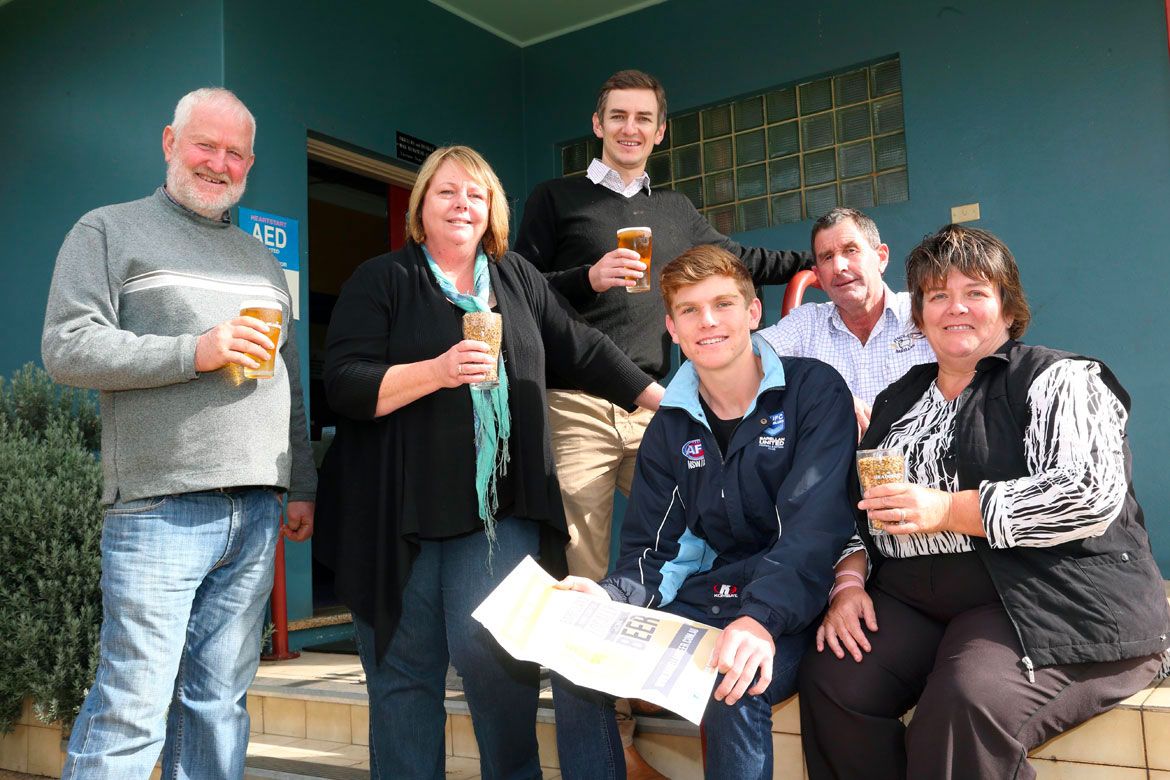
It probably pays to step back in time a little to trace how these two childhood mates who met at school (and who now involve local school pupils in their mission, of which more later), got to this point.
You could start with the first time The Crafty Pint crossed paths with them, back in 2015, when we told the tale of the Barellan Beer project (belated apologies to everyone involved for the pun in the title that doesn’t work if you know how the town’s name is pronounced). After all, the beer that arose from that project is still brewed to this day, still brings beer tourists to the local clubs and pubs where it’s stocked, and still puts money into the region.
Yet it’s worth heading back even further.
Brad and Stu grew up on nearby farms and went to the same school. For context, the school was small enough that Stu can lay claim to what we assume is a pretty rare achievement: he was chosen as head boy in year ten; then, by virtue of the fact he was the only kid to stay on to complete years 11 and 12 he became, by default, head of the school for three years straight.
They became close friends and, at the same time, fierce competitors always looking to outdo each other. Born into farming families, the expectancy would have been that they’d follow in the footsteps of their parents and their parents before them. Yet the Millennium drought that impacted much of Australia made it clear there wouldn’t be enough income to support them on their family farms, so they looked elsewhere.
Brad was the first to leave for uni, heading to Wagga Wagga to study finance, and later suggesting Stu join him.
“I assumed it was all books and study,” Stu says, “but it was all drinking and partying, so I decided to go and study engineering.”
An engineering degree under his belt, he returned home to teach at the local high school while Brad took on a role as a financial advisor for a local accounting firm. And it was in this period that a series of seemingly unrelated moments began to coalesce into what would become the vision at the heart of Voyager.
There was the time Brad brought a six-pack of Little Creatures back from a wine show. The beer blew their minds, but once the bottles were empty they couldn’t get their hands on any more so Stu dusted down a homebrew kit he'd received for his 18th birthday and started brewing at home. This meant Brad had to start brewing at home too, and their competitive natures ensured they’d push themselves to outdo each other with every batch.
When Stu met his future wife, Leigh, whose family own Berton Wines, he felt he needed to impress them and started to learn more about wine. As he came to understand the reverence with which winemakers regarded their grapes, and the manner in which the nuances of each vintage were celebrated, he started questioning why this wasn’t the case for the grains that went into beer.
Then, on a tour through Europe, exploring both beer and wine culture, and spending time in Germany's hop and grain fields, as well as its breweries, arguably the key epiphany took place at Kloster Andechs, a brewery in a monastery southwest of Munich.
“I was sitting having a beer and someone said, ‘That’s where the grains come from and that’s where the hops come from’,” Stu recalls. “And I thought, ‘We can do that from the pub in Barellan.’.”
From that flowed the thought: why don’t we take barley grown on our farm, turn it into beer and use it to tell the story of provenance and terroir? After all, he figured, if it’s good enough for wine, why not beer?
Initially, he envisioned starting their own brewery, which is where the Barellan Beer project entered the picture. The first batch was paid for by crowdfunding – a campaign that raised twice the initial $15,000 target – and led to the Golden Grain Ale.
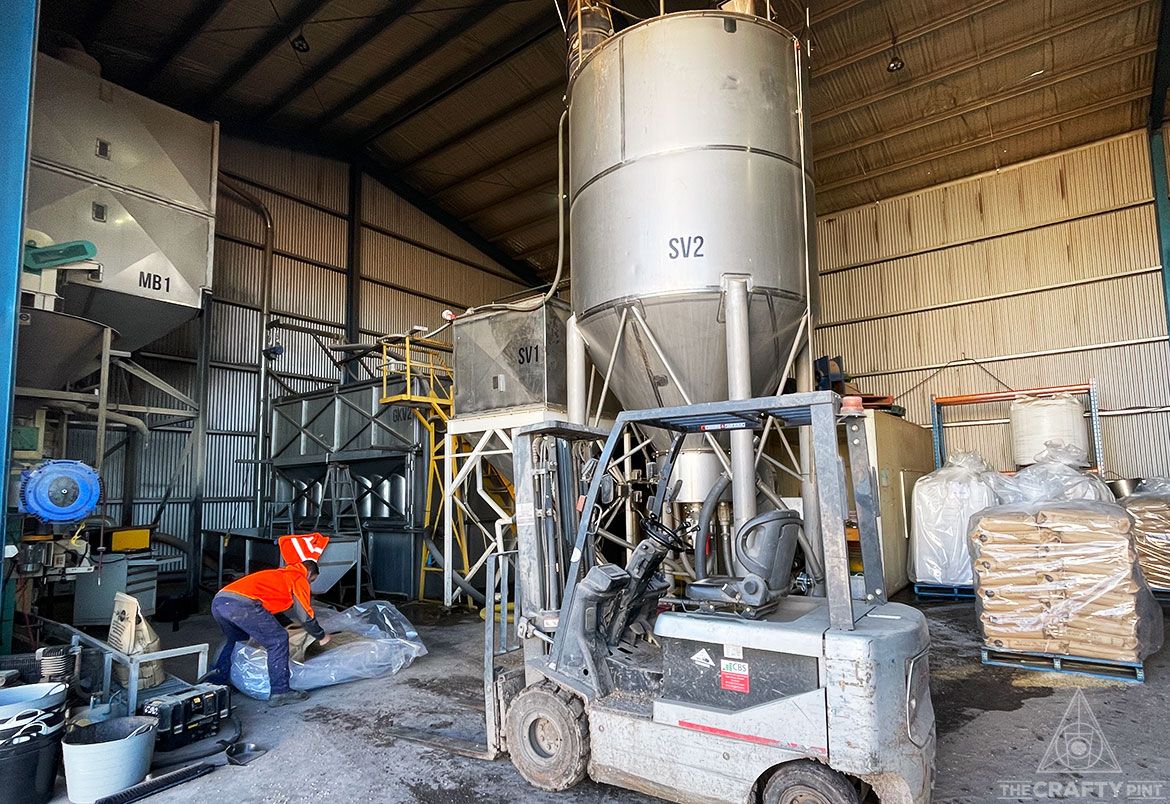
But a combination of factors saw them head in a different direction. When Brad crunched the numbers, he said starting a brewery in their home region would be unviable. What’s more, to make the first Barellan beer, they’d had to send barley on a long roundtrip to become malt – a costly and inefficient process. So, over time, the beer project morphed from brewery to a local malting operation that would work with local farmers to create small batches for small breweries right in the heart of the NSW food bowl where the grains were being grown.
Utilising his engineering skills and plenty of research, Stu designed their first steeping vessel and GKV (germinating and kilning vessel), had them manufactured locally, and installed them in a shed near Whitton. They processed their first batch of grain in the second half of 2014 and ran the vessels nonstop afterwards, with the one tonne capacity GKV giving them 40 tonnes of malt in their first 12 months.
While there were issues with early batches, feedback from brewers such as Batch co-founder Chris Sidwa helped steer them in the right direction, and from then on it’s been something of a runaway train.
Today, their annual capacity sits between 6,000 and 8,500 tonnes depending on what they’re producing. They have three GKVs that can handle 50 tonnes at a time – one of those is dedicated purely to smoked malts – so just eight years on, they can make more smoked malt in one batch than they made of all malts in a year.
Then there’s the 16 120 tonne vessels that hold finished malt and 40 towering silos designated for raw grains previously held on the farmers’ properties.
Of course, citing figures only tells a fraction of the story and risks underplaying the operation's impact on people, from farmers on the one hand to beer lovers on the other. Because today you’ll find some craft brewers using nothing but Voyager’s ever-expanding range of malts, while the country’s larger suppliers of malt have been putting a greater focus on the provenance and environmental credentials of their produce as the demands of the market have changed.
The storytellers
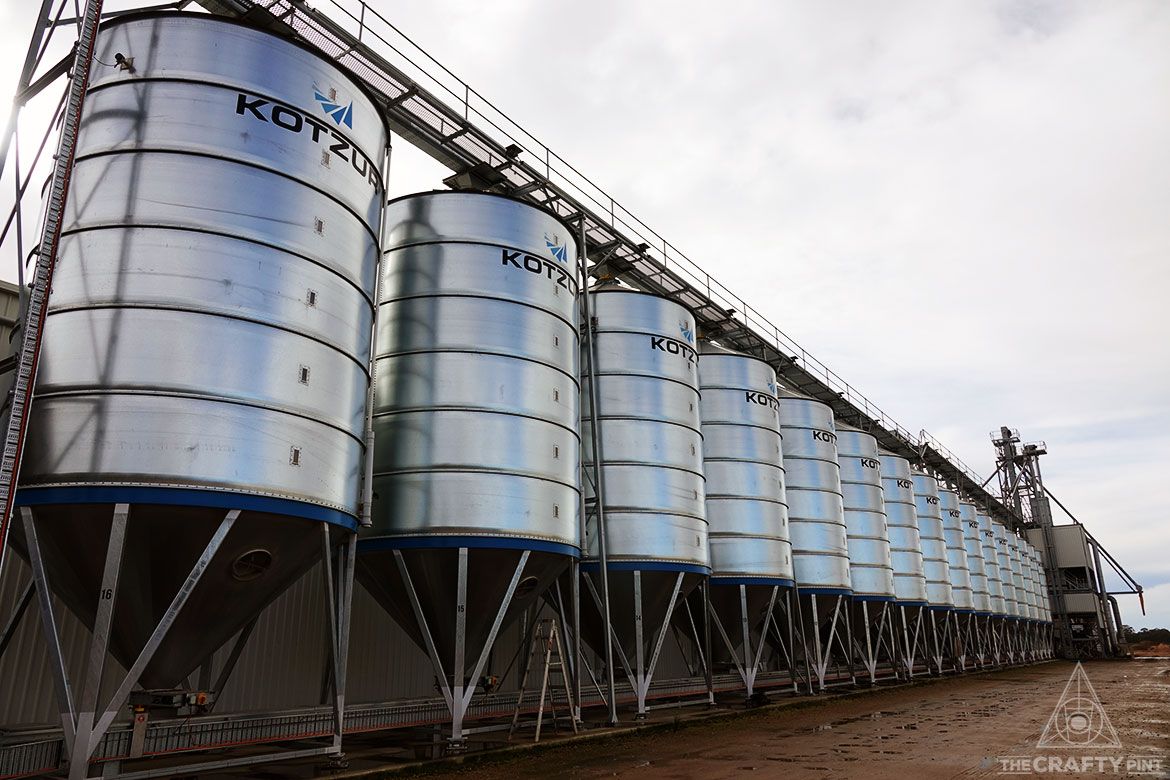
One of the strongest cards the craft beer industry can play is the story it has to tell, whether that’s the overarching story of its rise and impact over the past few decades or the individual stories of brewers, beers, venues, festivals, and so on.
As interest has grown in the (mostly) golden liquid in one’s glass / can / bottle, so has the desire of some drinkers to explore what it is: What ingredients go into beer? How do they become beer? Why does one look, smell and taste one way while another is so different?
It’s fair to say that in the world of ingredients, when it comes to capturing the attention of beer fans hops have been the undisputed queen. They’re often the most obvious element in a beer, and most of the craft style beers that are sold in Australia are pale ales that show off their hops more than any other ingredient. What’s more, growers and breeders have done a great job of telling their story, especially around harvest, even building strong brands around them, not least in the case of Hop Products Australia’s Galaxy.
Thus, despite malt playing such a crucial role in brewing, it has played second fiddle in consumers’ interests – even though it forms the backbone of beer, gives most beers their colour and an array of flavours from biscuit and caramel to coffee and chocolate, and provides the food yeast needs to create carbonation, alcohol, and some flavours and aromas.
And this is another area in which the team at Voyager focuses much of their time: on telling the story of malt, the grains they malt, the land upon which they’re grown, the people that tend that land, and the ways in which they’re trying to change the way we farm to be kinder to the planet.
Thanks to their partnership with Southern Cotton, of which the centrepiece is the majestic Whitton Malt House, they’re also in prime position to do so. Sharing a building with Voyager’s new malting operation, it’s a venue and destination unlike anything else in the region. Within the main bar and restaurant, you can enjoy a spot of fine dining featuring dishes showcasing local ingredients, choose from a rotating lineup of beers from brewers around Australia all brewed with Voyager malt, and pull up a stool for a guided tasting of whiskies and other spirits made with, you’ve guessed it, their grain.
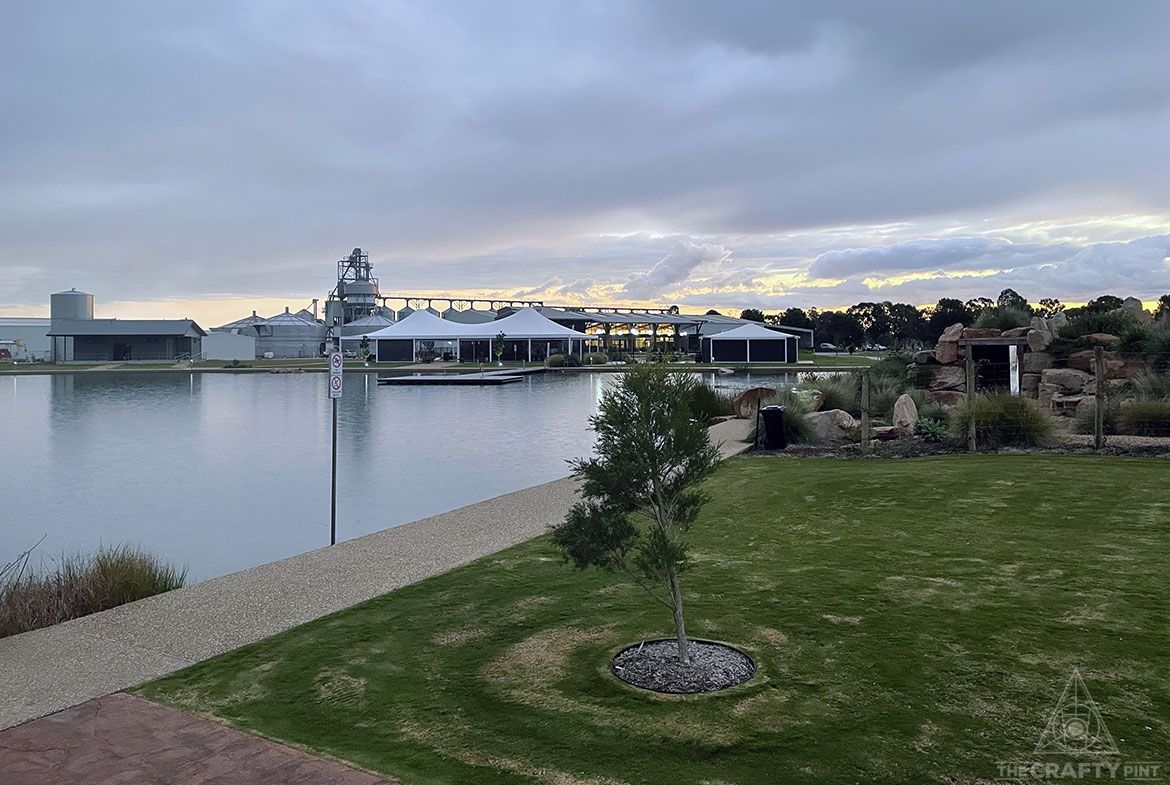
Surrounding the venue is a lake in which you can fish for cod or fire golf balls in the hope of winning a prize, sculptures, and 16 holiday villas. When I called in, while the family was off swinging golf clubs Stu took me to the very top of the vessels and pointed to an area where they’re considering putting in a caravan park, and another where they plan to hold beer and music festivals.
It’s an impressive place to bring guests, whether that’s brewers, tourists or media, and a great place in which to hand samples to visiting members of the industry – especially when compared to Stu’s original idea: a couple of taps tucked in the corner of a faceless office above their storage warehouse. Just as well their friends at Southern Cotton had other ideas for the hospo offering…
Stu believes shows like Masterchef have started teaching people to care about quality more than quantity and to take more of an interest in where their food comes from, which is central to the story at Whitton. At the same time, it works the other way too: letting the region’s primary producers know where the grains they’ve grown have ended up. By documenting their journey from paddock through the malting process to individual breweries, distillers or bakers, they can say to a farmer: “This beer is made with your grain.”
“We are growing barley 30 kilometres up the road, but [farmers] had no idea whether it went into beer or whisky,” Stu says. “But it's not just the connection back to the paddock, it’s the community around it.
“You see what this has done for the local community – we are employing close to 100 people here and bringing tourists to the region. These small, little decisions by consumers and brewers can make a difference. By using something local, the flow-on impacts for people and communities like these is sensational.
“I’m a local and I'm passionate, and it's been fairly disappointing to see my hometown and a lot of country towns dying a slow death. Now we have got an opportunity to put it on the map as somewhere that grows world class malt that goes into beers and whiskies that are winning awards all around the world.”
Clearly, it’s not just the local farmers benefitting from this oasis. But, given the founders grew up on farms, were inspired in part to get started because they wanted to give back to the farming community, work closely with farmers, and do everything they can to tell the stories of the farmers, we should probably tell one too.
Getting back to nature
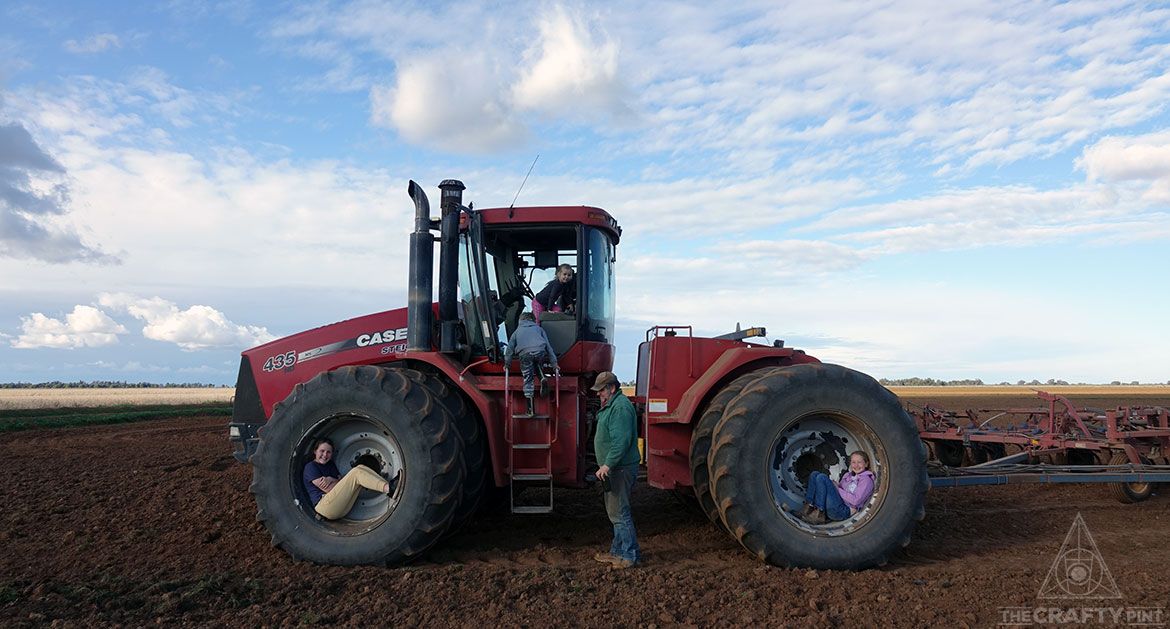
“If they can’t see it they don’t believe it, because it’s hard to believe.”
If that quote sounds a little Field of Dreams – build it and they will come – then so be it. They’re the words of Chris Greenwood, who has been running Organically Greenwood with wife Sam on a 4,000 acre farm in Coleambally they took on seven years ago, and to which they’ve since added close to another 2,000 acres. The words refer to the results they’ve been achieving since they started switching their land from modern, highly intensive agricultural practices to regenerative methods.
Case in point: during the drought year of 2017, when the region’s only rainfall came in a couple of storms, they still managed to harvest a good yield thanks to their soil retaining what little water fell deep in its network of roots. On neighbouring farms, where paddocks had been left bare and stormwaters instead ran off into dams, their yields paled in comparison.
It showed there was method to what farmers following modern practices might have called madness, even if Chris admits with a laugh: “I’m still regularly told I’m fucking mad!”
If you’ve followed the Voyager story, there’s a good chance you’ll have come across the Greenwoods at some stage. And you’ll probably have an idea what their home looks like too, because while the Whitton Malt House is a fine place to showcase both the malting side of the business and the end product, much of the footage and photos featured in past media coverage comes from this farm an hour to the south.
The Greenwoods supply almost everything labelled organic that passes through Voyager, and have paddocks assigned to Batch and Wildflower – two of the brewers with whom they have a long history. Prior to moving to Coleambally, they farmed biologically at Lake Boga for 15 years, while the young Chris seems to have shared similarities with the young Stu; he might not have been given 50 acres as a kid, but he started his own hay contracting business while at school.
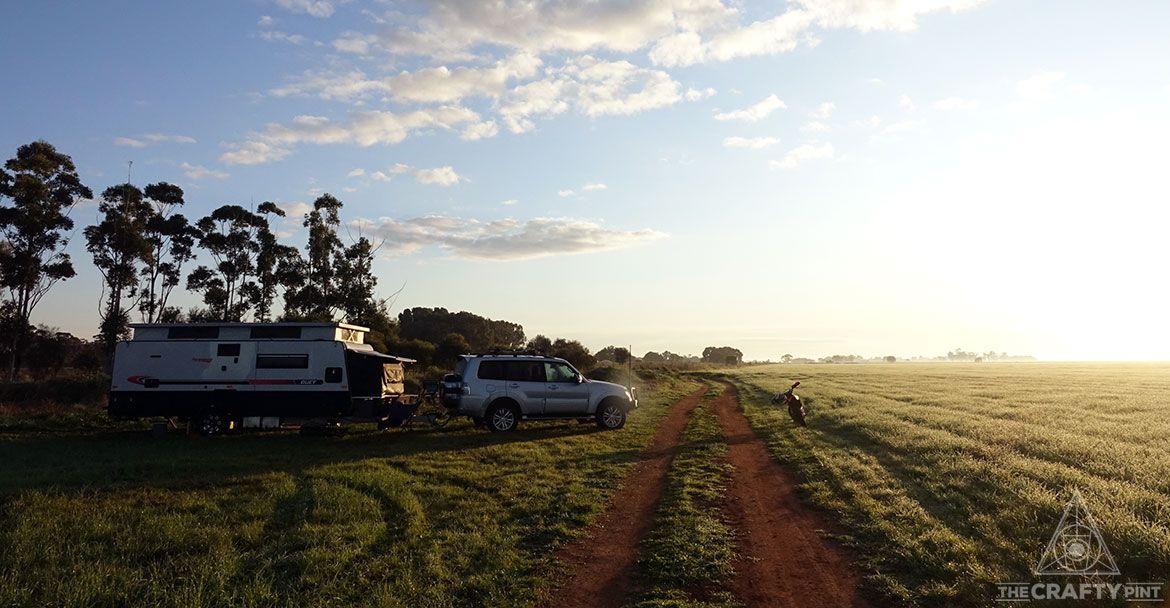
As an example of the sort of experience and insight they can offer guests, on the night the Crafty family visited, we parked our caravan in Wildflower’s paddock as Sam and Chris lit a large fire and cooked a camp oven dinner, complete with salami from Stu’s recent Pig Day Out. In the eskies were beers from the aforementioned brewers plus Tumut River Brewing Co, BentSpoke, Hargreaves Hill and others; later, whisky and rum from the like of Archie Rose made an appearance.
Not only did the location make for an eerily and beautifully quiet spot from which to gaze upon the Milky Way once the hosts had retired, but it was also the ideal base for a tour of the home of Organically Greenwood the following day.
Sam and Chris told us of their story to date, their mission, and the impact they hoped to have on others. On a tour of the farm – with their three kids and my two bouncing away delightedly in the back of the Ute – Chris explained how their irrigation system worked, the prices they were forced to pay for the water, while each new paddock seemed to form another piece of the jigsaw, tell another part of the story, reveal another experiment at play.
You could spend days, and at least as many words as are already in this article, explaining the ethos behind their regenerative approach. But, at risk of drawing barbs for over-simplification, it’s essentially a case of growing the soil rather than the plant. Of letting nature get back to being what it was before industrial farming techniques took hold.
The Greenwoods, like a growing number of farmers across the country, don’t till their land unless it is absolutely necessary and, even then, do so for as short a period as possible. Instead, they mulch rather than burn the residue from each crop, returning it to the soil to aerate it, then sowing fresh seeds into the often untilled soil.
They don’t use nitrogenous fertilisers or any other synthetic fertilisers or chemicals, due to their high carbon footprint and negative effects on soil health, instead turning to the likes of lime and naturally sourced rock phosphate. (Interestingly, they are experimenting in one paddock without lime to see if it improves the end flavour in beer after some feedback from Topher Boehm at Wildflower.)
They plant plenty of legumes that return nitrogen to the soil. They grow multiple plant varieties in each paddock to ensure a diverse biosystem within the top soil. There will always be something growing in their paddocks, even when the main crop has been removed, which has the added benefit of providing a plant canopy that helps keep the soil cooler and retain more moisture during hot periods.
They’ll put livestock into paddocks to process legumes and other plant matter in their ruminant stomachs, which in turn puts nitrogen and carbon back into the soil as nature takes its course. They even maintain a copse of saltbush that’s good for livestock feed, adds to the biodiversity, and has provided an ingredient that featured in a collab brew Wildflower put down in Belgium.
Ideally, they’ll start growing the crops that require most nutrients, such as barley, far less in each paddock than is common practice, rotating through other usages in the meantime. This allows the soil to recover better, and to have more to offer the barley next time it’s planted. But, essentially, it’s about allowing nature to get back to being nature – to regenerate and return to health.
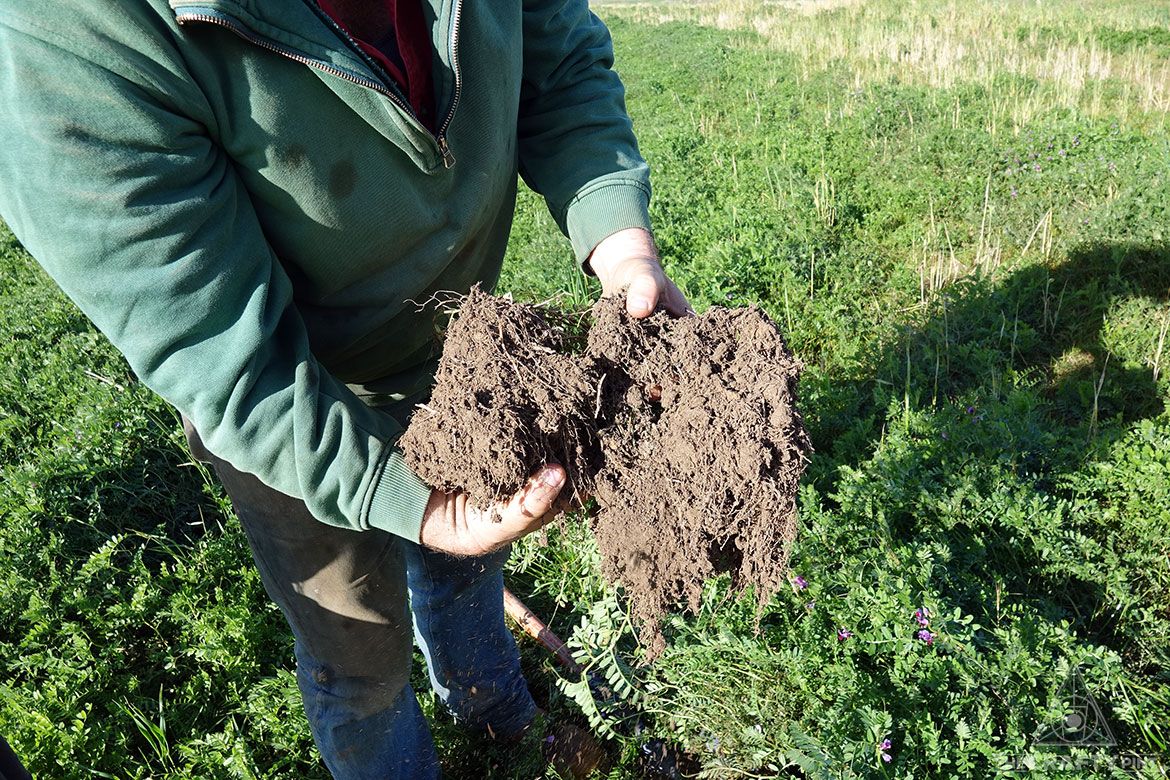
While Chris has done and continues to do plenty of research, and is in contact with others in his field not just in Australia but overseas too, he admits to enjoying the challenge of puzzling things out for himself.
“There will be nights when I’m still in front of the fire at 2.30 in the morning when I need to be up at 5am,” he says. “And I’m just trying to work out something in my head.”
It’s an approach that drew unexpected praise from one of his old uni lecturers at Dookie Agricultural College when they crossed paths not long after taking over the farm.
“It was really eye-opening,” he recalls. “I was never very academic and just scraped through [the course]. I told him what we were doing and he said, ‘That’s so good.’
“I said, ‘That’s not what you taught us.’ And he said, ‘I’m glad we got through to one of you. You question everything now.’.”
For all the positives that have come their way, as with any pursuit so in hock to nature in a time of seemingly cascading climate disasters, the Greenwoods have had their highs and lows. But, again, the path they’re following in cahoots with Voyager and the brewing world provides support. Not only are there no middle men or brokers requiring a cut between the farmer and Voyager or Voyager and the brewers, but there have been times when Chris’ close relationship with brewers has come to his rescue.
“I remember sitting with Stu on a Zoom with the guys at Batch during a drought year,” he says. “They asked about the crop. I said it was half what we’d been hoping to harvest, things had been tough, water was expensive, and he said, ‘How much does the barley have to be?’.”
Chris explained they’d agreed a price, but they insisted on renegotiating to pay more, their argument being: “We need you to be here next year, and the year after and the year after.” In a later year, after a bumper harvest, the Greenwoods offered to return the favour by dropping their prices.
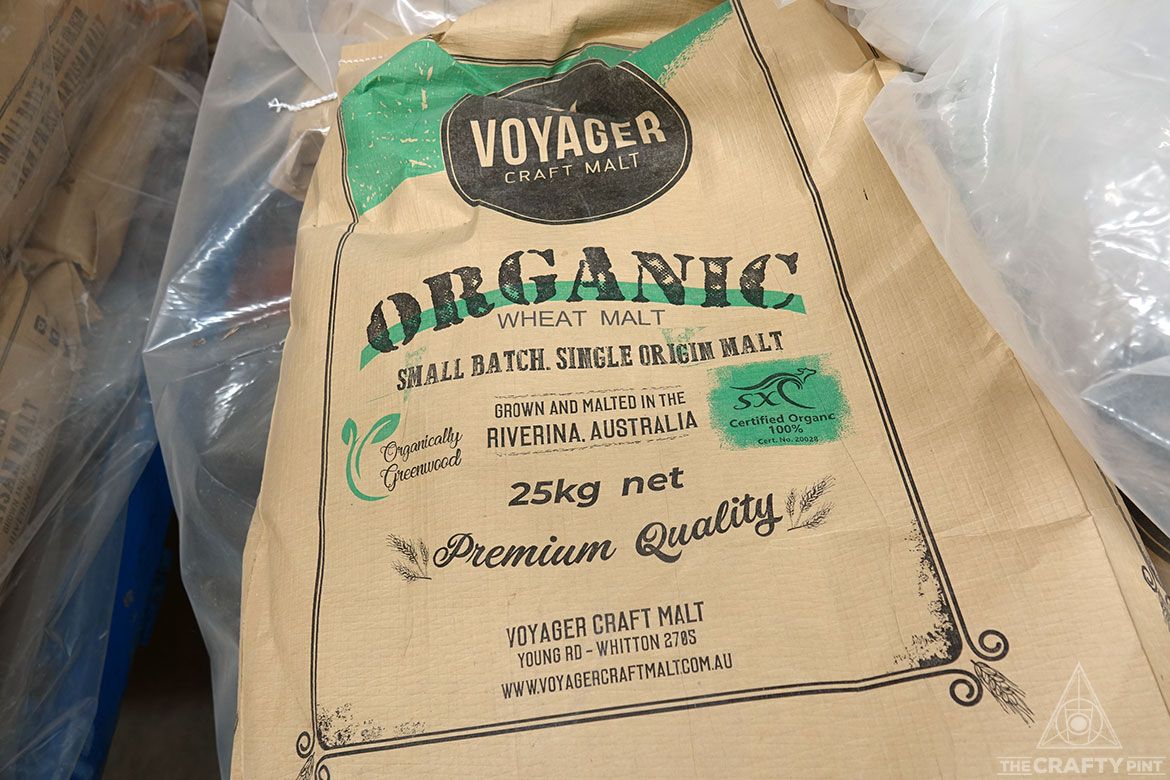
Other farmers are starting to pay attention to what the Greenwoods and regenerative farmers across the country are doing too. According to Stu, it’s not necessarily because they’re seeing people pull a reasonable crop in drought conditions, more because of the impact this farming has on reducing carbon footprints.
When Voyager carried out analysis on their carbon footprint as a business, they discovered the greatest culprit wasn’t machinery or fuel, but related to the fertilisers used by those following modern agricultural methods. By returning to farming more in line with the way humans had done so for millennia before industrial practices took over, they found they could attain reductions of up to 80 percent in the carbon footprint.
“When we first bought the farm, one of my mates couldn’t speak to me [because of the way we were farming],” Chris says. “Now he talks to me and he’s saying all of these problems he’s trying to fix come back to the soil, and he’s seen what we’re doing.”
Looking ahead beyond the next crop and the next experiment, he says: “We want to leave our land in better condition for our kids than when we got it.
“If we keep farming the way we have been, it's not going to be for the next 100 years. If we can manage the the soil and make it healthy then that's what our kids need, and their kids too. But, at the moment, agriculture is headed for a tough end.”
Variety is the spice of life
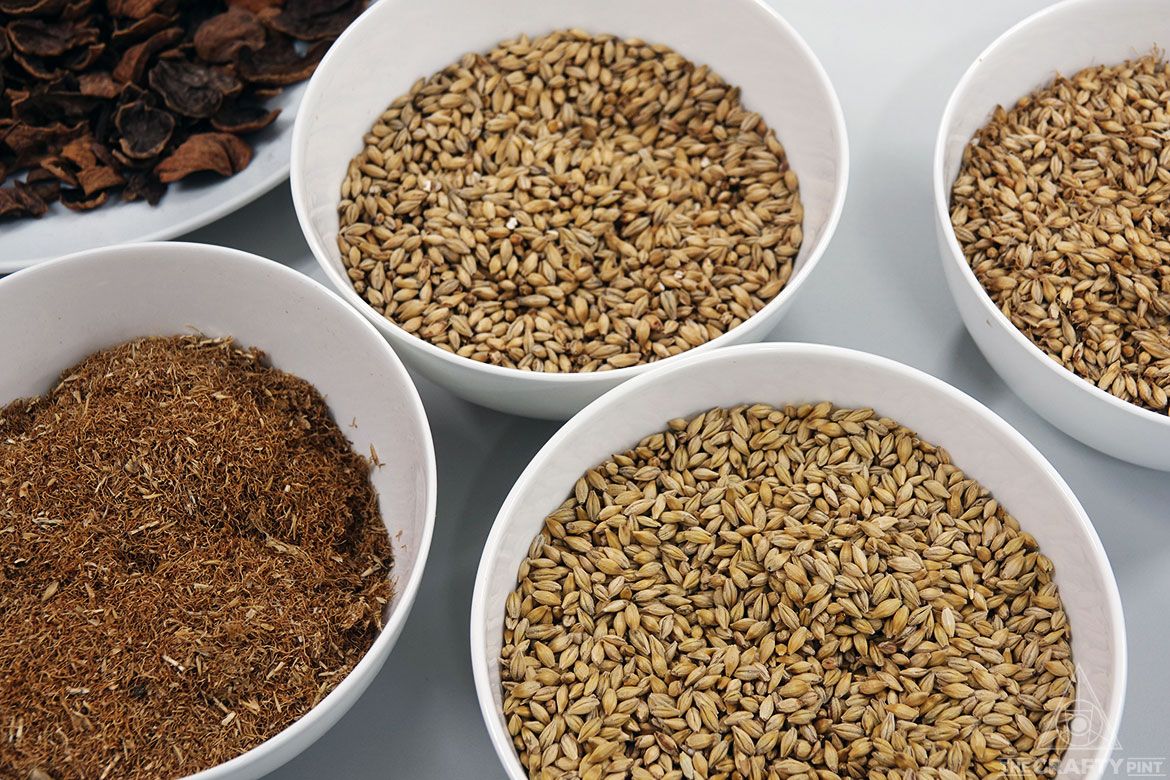
The Greenwoods might be the main supplier of organic grains to Voyager, but they’re just one of a dozen farmers Brad and Stu work with – and those farmers are only part of the self-sustaining ecosystem that has grown up around the maltings.
Take a wander through Voyager’s storage warehouse or the lab that overlooks it, and you’ll quickly become aware of the vast array of products they provide to the country’s artisan booze-makers. If someone wants a 25kg bag of organic smoked corn, they’ll source the organic corn and fire up the first set of equipment they built. If you’re after some smoked barley malt, don’t worry, they’re probably experimenting with three types of gum as you read these words.
Archie Rose, the Sydney distillers who buy up a significant portion of Voyager’s output each year, told Stu they’re interested in making a more approachable rye whisky; it turns out the small rye grains they currently use give an intensity to the finished product, so Stu went to the seed bank in Horsham and came back with 40 different rye seeds, some dating back decades, to see which might be suited for upscaling to commercially viable levels.
Then there’s the fun and games to be had with ancient options like the Tibetan purple barley growing on his 12th birthday plot. All of this requires someone to handle the process of planting and growing the seeds to see which will take and which are suited for use in beer, spirits or baking.
So, given there’s only eight people responsible for putting out up to 8,500 tonnes of malt each year, it’s a job that’s been outsourced – to a local school. There, pupils will grow the initial tiny crops that can then be analysed for their potential as future commercial crops. As for those chosen for the project, it might come from a request such as that from Archie Rose, or, says Stu, it could be down to an old variety having a cool name like Corvette.
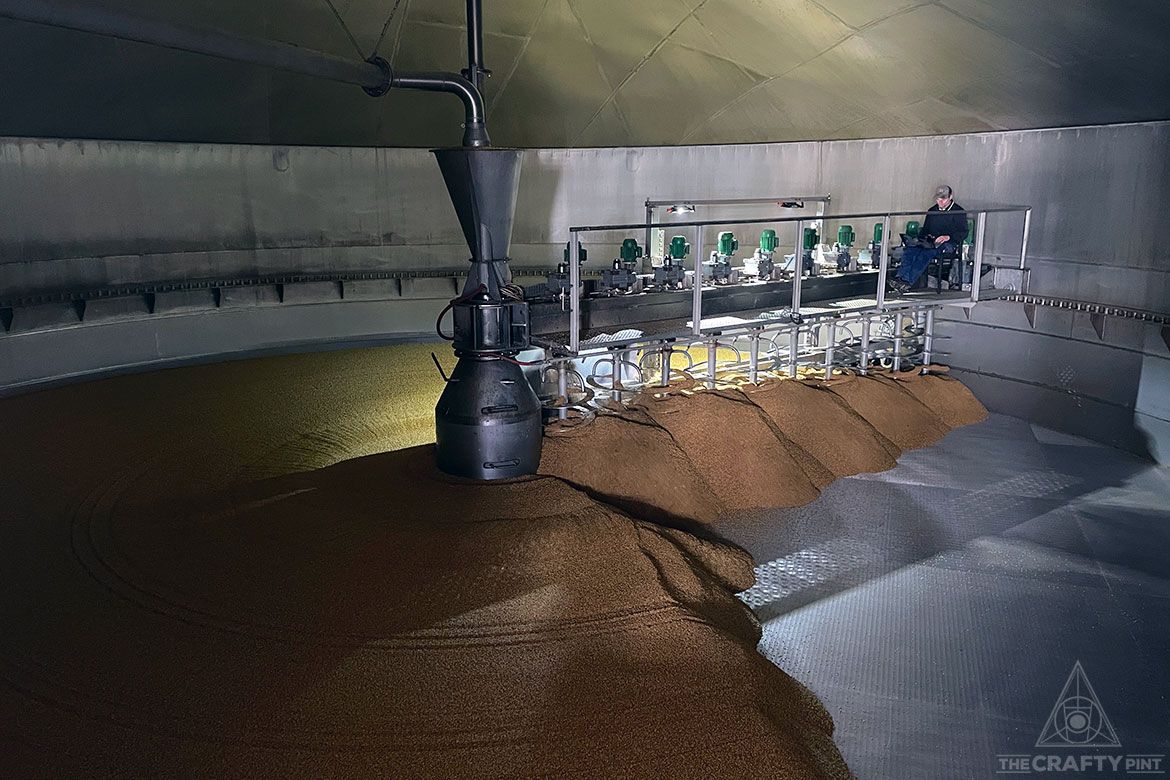
At this point, I’m acutely aware of two things: that I’ve been asking a lot of your time to keep reading this far, and also that there’s much I haven’t yet touched upon.
There’s the attention to detail in their packaging, from the biodegradable 25kg bags they use to their plans to premix malts in larger bags to a brewery’s specific recipe requirements. That way, they don’t have to send as much packaging to a brewery and the brewer merely has to mill the whole lot before adding it to the mash tun rather than handling individual bags of grain.
There’s the solar panels covering much of the maltings' roof and the sending of waste products back to the farms. And then there’s the Biochar facility, whose existence could be viewed as a stroke of luck, or coincidence, but only if you ignore the work that’s gone into turning that stroke of luck into what it is now.
Close to the site of Voyager’s original vessels (which will soon be moved to the Malt House), a company called Pyrocal was running a pilot Biochar facility. Taking advantage of the location within the Riverina food bowl, they wanted to trial using food waste to create a form of charcoal that is used as a soil ameliorant for both carbon sequestration and soil health benefits.
A byproduct of this process is the generation of energy and heat. Without going into too much detail, Pyrocal now operate a rather larger Biochar facility adjacent to the Whitton Malt House, churning through cotton trash from the neighbouring gins as well as walnut shells and other food waste, and providing heat and energy for the maltings, while creating char with uses as diverse as livestock and cosmetics.
“It’s another reason why malthouses should be on farms,” Stu says. “They’re traditionally in ports because grain is being exported, [but here] there’s no food miles involved in grain coming to us or waste going back to livestock. A lot of clients are also in regional areas.
“The Biochar reduces our energy bills, and solar covers one-third of what we’re doing.”
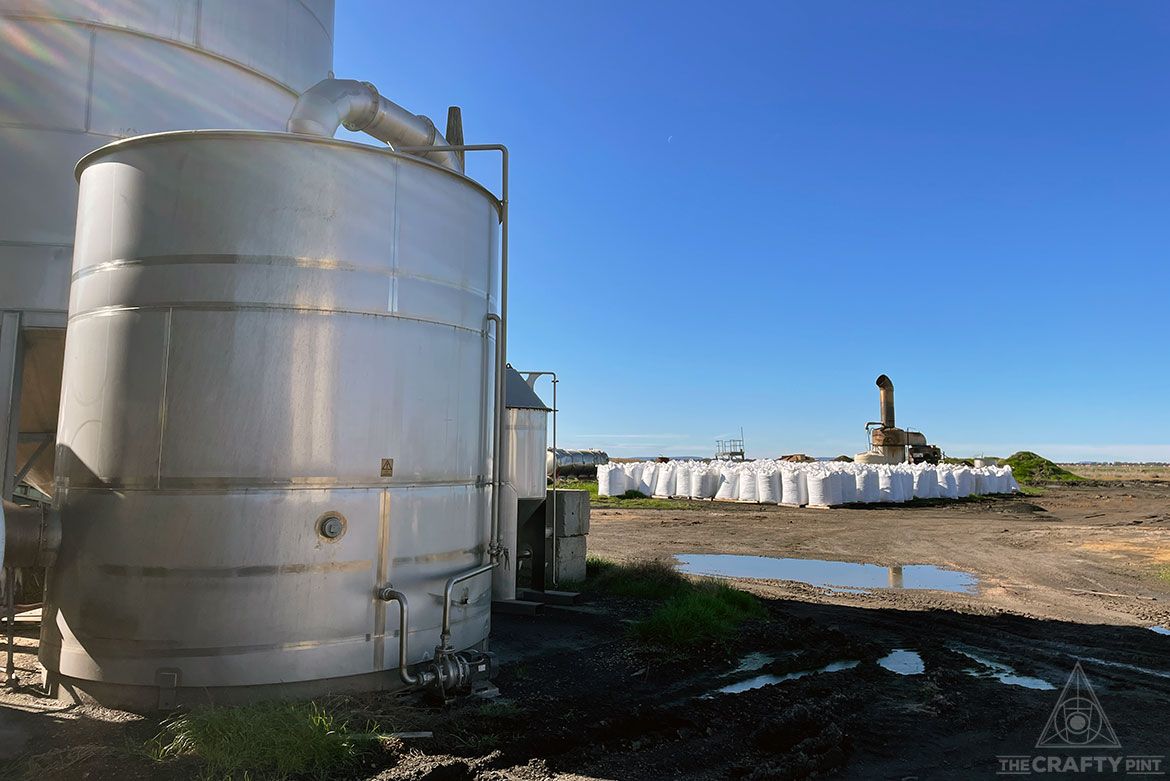
It really does feel like it’s too good to be true, yet at the same time seems so damn sensible it’s amazing something like this hasn’t happened before. And while it’s early days for the Malt House and their dreams of bringing Day In The Green shows to the grounds, seeing how far Brad and Stu's adventure has progressed in its first decade makes you suspect it can’t not have a positive impact on the wider community.
Sure, the area isn’t without reasons to visit already, with Griffith to the north, copious outdoor activities on offer along the Murrumbidgee (when not in flood), the unique Altina Wildlife Park a short drive to the south, and so on. Yet when the people working at every business in nearby Darlington Point – pub, café, minimart, sporting club – ask where you and your family are from, followed by: “So why are you here?” when you reply: “Melbourne.” you know there’s room for growth in terms of tourism.
Indeed, I couldn’t help but come away from Whitton feeling there’s a messianic quality to what’s going on at Voyager. I’m sure Stu would castigate me for such a statement – as would Brad if he didn’t do such a good job of avoiding the media. After all, he doesn’t in any way have the complex associated with the term – he’s way too humble, hardworking and generous for that – but the zeal with which they go about their mission, and the transformative impact they’re having in so many ways, really is special.
Initially, I formed such a view on the back of the way they’re so determined to make a positive, lasting change for the region their families have farmed for generations. Yet, over time, I came to realise you could equally view their mission in terms of making a positive, lasting change for brewers, distillers and bakers, or in the way they tell stories they hope will encourage others and, ultimately, have a positive, lasting impact on the planet. As a fellow interviewee from an upcoming documentary featuring Voyager and peers such as Ryefield Hops said to me at a preview screening earlier this month: “Everything Stu said on camera was perfect.”
It’s far from plain sailing, of course, as this latest devastating flood season is proving, yet the vibrancy and verve they and their coconspirators bring to their mission is impressive and addictive in equal measure.
But what of the endgame? Having come so far in less than a decade, just where do they see Voyager in another decade? No bigger, it seems, just even more interesting: Stu tells me he’d happily cease producing base malts – yes, including the one that won at the Malt Cup – if they can output nothing but 8,000 tonnes of smoked and other quirky, specialty malts.
Proof of such intentions can be found in their active support of similar projects in their earlier stages elsewhere in the country. Rather than looking to expand Voyager into new parts of Australia, Stu is consulting with a nascent operation in WA, for example.
“I think the future is really bright for craft malting,” he says. “Most states have one in planning or making malt, and that’s great for the beer industry.
“From a food miles point of view, it’s grown onsite, and malted onsite, then goes to breweries in regional areas so there’s a massive saving on freight costs too, plus the cost of the waste products that goes back to the livestock."
Who knows what Mr and Mrs Whytcross imagined when they presented Stu with 50 acres back in 1995, but in terms of ROI, I reckon it’s going OK.
You can visit the Whitton Malt House at 783 Whitton Darlington Point Road, Whitton, and find other articles in our Going Green series here.

